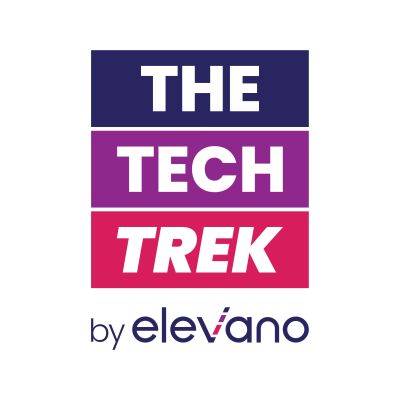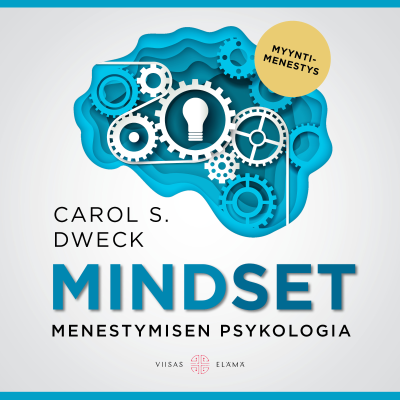
The Tech Trek
englanti
Talous & ura
Rajoitettu tarjous
1 kuukausi hintaan 1 €
Sitten 7,99 € / kuukausiPeru milloin tahansa.
- Podimon podcastit
- Lataa offline-käyttöön
Lisää The Tech Trek
The Tech Trek explores how engineering leaders build teams that deliver real outcomes. The show looks at the connection between people, impact, and technology, and how that relationship is changing fast with data and AI now at the center of every product and company. Hosted by Amir Bormand, founder of Elevano, the show features CTOs, VPs of Engineering, heads of data, and technical leaders who have built and scaled teams in high pressure environments. They share the decisions that shaped their path, the experiments that worked, and the thinking they rely on to stay ahead in a world defined by
Kaikki jaksot
585 jaksotHow Great Teams Align Goals That Actually Drive Growth
Gregg Altschul, Vice President of Technology at FanDuel, shares a clear and practical look at how leaders can create real alignment across personal, team, and company goals. He explains why transparency drives trust, how to build a path for growth at every level, and why the best managers help people pursue their long term North Star while still delivering for the business. This is a thoughtful and modern blueprint for tech leadership and team development. Key Takeaways Teams move faster when the company goal is translated into a simple set of objectives that every level can understand and act on. Transparency is the anchor for healthy goal setting and creates the space for honest conversations about career direction. Managers should encourage long term North Star thinking since it keeps people growing even after short term milestones are reached. Succession planning should be an active part of how teams operate so progress never depends on a single person. People can stay committed to their work even if they have long term plans outside the company, and supporting those plans often improves retention. Timestamped Highlights 02:19 How top level business goals get distilled into specific team and personal goals that engineers can act on. 04:57 The role of transparency in helping teams understand the why behind each objective. 07:34 Helping ICs tie personal development to broader company needs while still honoring their ambitions. 09:28 Creating a safe environment for honest career conversations in a world of hybrid and remote work. 15:14 Why knowing a person’s long term plans makes succession planning easier for everyone. 17:45 How Gregg works with his own manager on growth even when the title ladder narrows at the VP level. A standout idea from Gregg “As long as you have a North Star you will grow. Whether you ever reach the exact role you picture is not really the point. The point is growth.” Call to action If this conversation helped you rethink how goals work inside your team, share it with a colleague who will appreciate it. Follow the show so you never miss new episodes and connect with me on LinkedIn for more conversations with leaders shaping the future of engineering and data.
How To Grow From Engineer To CTO And Still Love The Code
Ken Ringdahl, CTO at Emburse, joins The Tech Trek to share what it really looks like to grow from engineer to CTO without losing your love for building. He talks about staying close to the code while leading a three hundred person org, how he learned the business side on the job instead of through an MBA, and why curiosity is still his strongest tool. If you are an engineer who cares about leadership, AI, and long term impact, this one will hit close to home. the-tech-trek_copy-of-ken-ringd… Key takeaways The best engineering leaders stay technical for as long as they can, then pick their spots to lean in where the business needs them most. You can learn the business side on the job by raising your hand for cross functional work and building real relationships with sales, finance, and product leaders. Curiosity is a career advantage, both in technology and in leadership, because the quality of your questions shapes the quality of your decisions. A practical AI strategy comes from listening to customers, partners, and internal experts, then translating that into focused product bets instead of chasing shiny tools. Do not rush into management just for the title, a deep foundation as an engineer will make every future leadership decision stronger. Timestamped highlights 00:38 Ken explains what Emburse does and how modern spend management lives at the intersection of software, data, and finance. the-tech-trek_copy-of-ken-ringd… 01:30 How he balances being an engineer at heart with the reality of leading many teams and products as CTO. 03:41 Ken reflects on missing his coding days, what he still tinkers with, and why he chose the bridge role between tech and business. 08:32 Learning leadership without an MBA, creating your own opportunities, and attaching yourself to people you can learn from across the company. 14:58 How he stays smart on AI through office hours, internal experts, cloud partners, customers, and investor networks. 21:22 His biggest advice for engineers who want to move into leadership and why he actually went back to a more hands on role before moving up again. One line that stayed with me “Even if you want to be a leader, do not rush it. Do not go so fast that you do not get that foundation.” the-tech-trek_copy-of-ken-ringd… Practical moves for your own career Stay technical as long as you can, then choose a few focus areas such as architecture, AI strategy, or cloud patterns where you can still go deep. Use curiosity as your main tool, ask simple but sharp questions of finance, sales, and customers so you see how technology really creates value. Look for chances to run cross functional projects early in your career so that by the time you step into leadership, you already understand how the wider business works. Treat partners, customers, and internal experts as an extended brain trust, especially when you are trying to shape an AI and platform strategy. Listen and stay connected If this episode helped you think differently about your own path from engineer to leader, follow The Tech Trek, leave a rating on your favorite podcast app, and share it with one person on your team. To keep the conversation going, connect with Ken on LinkedIn and find me there as well for more stories from leaders who are building real impact with technology.
Factory operating systems and the AI hardware crunch
Karan Talati, cofounder and CEO at First Resonance, joins me to unpack what modern manufacturing really looks like inside factories that build rockets, drones, reactors, and other complex hardware. We dig into why only a small slice of factories run on real systems today, what a true factory operating system unlocks, and how that connects directly to national security and the AI boom. If you care about where all of this new compute, energy, and defense hardware will actually come from, this conversation gives you a clear view of the stack, the gaps, and the opportunity. Key takeaways • Only a small fraction of factories in the United States use a manufacturing execution system, which leaves a huge gap between legacy on prem tools, paper processes, and generic workflow apps that were never built for hardware work • Cloud infrastructure and open interfaces now make it possible to deploy a purpose built factory operating system at a cost and speed that works for both fast moving startups and long standing suppliers • Reindustrialization does not mean bringing every product back onshore, it means being deliberate about the layers of manufacturing that matter most for national security, chips, optics, and other high value components • The real foundation for modern manufacturing is talent, there is a major chance to re skill people into highly technical, well paid roles in aerospace, semiconductors, energy, and more • AI and agent style workflows will sit across design, manufacturing, and field operations so that hardware teams can close feedback loops, shorten timelines, and make better decisions with the data they already generate Timestamped highlights [00:40] Karan explains what First Resonance does and why he calls it a factory operating system for complex industries like aerospace, defense, energy, and autonomy [01:55] How we ended up with only about fifteen percent of factories running on an MES, and why most hardware work still lives on paper, spreadsheets, and ad hoc tools [06:49] A clear walkthrough of how offshoring looked like a rational path for decades, and why it created hidden risk across chips, optics, and other critical components [11:46] Which parts of manufacturing should come back onshore, why you do not want everything local, and how workforce strategy fits into the new industrial map [16:35] What a horizontal stack across design, factory systems, test, and field data can look like, and how AI agents can keep teams in sync across that stack [23:02] The real timelines of hardware in the age of AI, why software is speeding up physical development, and why examples like SpaceX and TSMC matter for the next decade A line that stayed with me “Hardware and software are not separate worlds, they are one system that is now converging faster than most people realize.” Practical moves for tech leaders • Map your current manufacturing and hardware workflows, even if you are at a software first company, find the paper, spreadsheets, and disconnected tools that support anything physical you ship • Look for one or two places where a factory operating system or modern MES could remove handoffs, for example design changes that take weeks to reach the line or test data that never feeds back into engineering • Treat manufacturing careers as part of your talent strategy, help your teams see these roles as high skill and high impact, not as a side track Call to action If this episode gave you a clearer view of how hardware, AI, and national security tie together, share it with one other person who should be thinking about the factory side of their roadmap. Follow and subscribe to The Tech Trek so you never miss deep dives like this, and connect with me on LinkedIn if you want more conversations at the edge of data, engineering, and real world impact.
Inside the Business of Modern Waste Management
Michael Marmo, founder and chief executive of CurbWaste, joins The Tech Trek to share how he went from catching fastballs in Europe to building software that runs the daily work of waste haulers. We walk through the very human side of leaving a sports identity, starting at the bottom in a family waste business, and finally asking a simple question about founding a company. Why not me If you are sitting inside an industry and quietly seeing the gaps that no product seems to solve, this conversation is a playbook in how to turn that insider view into a real business, even if you do not come from a traditional tech background. Key takeaways • Identity can change, but the work habits that made you good at sports or any craft can transfer directly into building a company, especially persistence, dealing with failure, and showing up every day • You do not have to love a specific activity forever, you can follow the deeper thread underneath it, like merit, teamwork, and visible impact, and find those same traits in a very different industry • Deep time inside an industry lets you see painful, repeatable problems, and that is often a better seed for a product business than starting with a clever idea and pivoting until something sticks • A clear why for the product and a clear why you are the person to build it are not nice to have, they are what convince customers, hires, and investors to follow you when things get hard • Great founders do not pretend to be good at everything, they are honest about what they do not know, learn just enough to make good calls in product, engineering, and go to market, and then surround themselves with people who fill the gaps Timestamped highlights 00:32 Michael explains what CurbWaste does and how it runs a hauler business from first customer contact through billing 01:21 From college baseball and pro teams in Europe to the first job in media and tech sales, and the identity shock that came with that change 06:27 What it really felt like when the game ended, why mens leagues did not scratch the itch, and how that led to a quiet reset in the working world 09:11 Starting at the bottom in a family recycling center, discovering a love for the waste industry, and why it felt like a merit based team environment 15:24 Walking the floor at Waste Expo, not finding the software he needed, deciding to fund and build his own tools, and seeing other haulers facing the same problems 19:40 The moment hearing the Yelp founder speak turned into a personal question, why not me, and how that idea of trying anyway shapes the way he thinks about founding today A line that stayed with me “At the end of the day he tried. He had an idea and he acted on it and pursued it. That really resonated. I was like, why not me” Practical notes for future founders • Before you write any code or quit your job, write down why this problem matters, why it matters now, and why you are willing to keep going when it stops being fun • If your first answer to why is only about money, keep digging until you find something that still feels true on a hard day, because you will have a lot of those • Use your current role as a live lab, list the moments that feel broken, expensive, or slow, and ask which of those could actually support a business if you solved them well • Be direct with yourself about weak spots, whether that is product, tech, or selling, then build a basic understanding and lean on people who are strong where you are not Call to action If you enjoy stories that get inside how real founders make the leap from operator to builder, follow The Tech Trek in your favorite podcast app and share this episode with someone who is quietly thinking about starting something of their own.
How data teams are rebuilding insurance from the inside
Jason Ash, Chief of Data at Symetra, joins the show to unpack how a mid sized insurer is rebuilding its data stack and culture so business and technology actually pull in the same direction. He shares how his team brings actuaries, product leaders, and engineers into one data platform, and why opening that platform to non technical contributors has been a turning point. If you work in a regulated industry and are trying to move faster with data, this conversation gives you a very practical view of what it takes. Key takeaways • Business and tech only work when they share context and trust Jason has sat in both seats, first as an actuary and now as a data and engineering leader. That dual background helps him translate between risk, regulation, and modern data practices, and it shapes how he frames projects around shared business outcomes rather than tools. • Put data leaders inside business line leadership, not on the outside Several of Jason’s managers sit on the leadership teams for Symetra’s life, retirement, and group benefits divisions. They hear priorities and constraints at the same time as product and distribution leaders, which lets them frame data as a value add for new products instead of a back office cost. • Treat the warehouse as a shared product and measure contributors, not just tables Symetra’s dbt based warehouse started with about five contributors. Over three years they grew that to more than sixty, and half of those people sit outside the core data team. Business users learn to contribute SQL, documentation, and domain knowledge directly into the repo, which spreads ownership and reduces bottlenecks. • Shift stakeholders away from big bang launches to steady delivery Jason pushes his teams to think like software engineers. Rather than promising a perfect data product on a single date, they deliver an early slice of data, have partners use it right away, collect feedback, and improve every month. That builds trust and avoids the usual disappointment that comes with one big release. • Use maturity as a guide for where to invest Early on, his group picked a few strong champions who were willing to accept slower delivery in exchange for building real infrastructure. Now that the platform and practices are in place, the focus is on scale, reuse, and getting more people to build on the same foundation, including as AI capabilities start to reshape the work. Timestamped highlights 00:53 Jason explains what Symetra actually does and how their product mix makes data work more complex than the company size might suggest 02:19 From actuary to Chief of Data, and what sitting on both sides of the fence taught him about business and technology expectations 08:08 Why mixing data engineers, data scientists, actuaries, and analysts on the same problems leads to stronger solutions than any single discipline alone 13:44 How embedding data leaders into each business division’s leadership group changed when and how data enters product discussions 16:38 The dbt story at Symetra, and how more than sixty people across the company now contribute directly to the shared data warehouse 26:22 Moving away from big bang data launches and setting expectations around early value, continuous feedback, and ongoing quality improvements 32:06 The tension between safety and speed as AI advances, and what Jason worries about most for established insurers that move too slowly Practical moves you can steal • Put data leaders on business line leadership teams so they hear priorities and constraints in real time, not after the roadmap is set • Track how many unique people contribute to your data warehouse and make that a visible success metric across the company Stay connected If this episode helped you think differently about data leadership in regulated industries, share it with a colleague who owns product, data, or actuarial work.
Valitse tilauksesi
Rajoitettu tarjous
Premium
Podimon podcastit
Lataa offline-käyttöön
Peru milloin tahansa
1 kuukausi hintaan 1 €
Sitten 7,99 € / kuukausi
Premium
20 tuntia äänikirjoja
Podimon podcastit
Lataa offline-käyttöön
Peru milloin tahansa
30 vrk ilmainen kokeilu
Sitten 9,99 € / month
Premium
100 tuntia äänikirjoja
Podimon podcastit
Lataa offline-käyttöön
Peru milloin tahansa
30 vrk ilmainen kokeilu
Sitten 19,99 € / month
1 kuukausi hintaan 1 €. Sitten 7,99 € / kuukausi. Peru milloin tahansa.

































